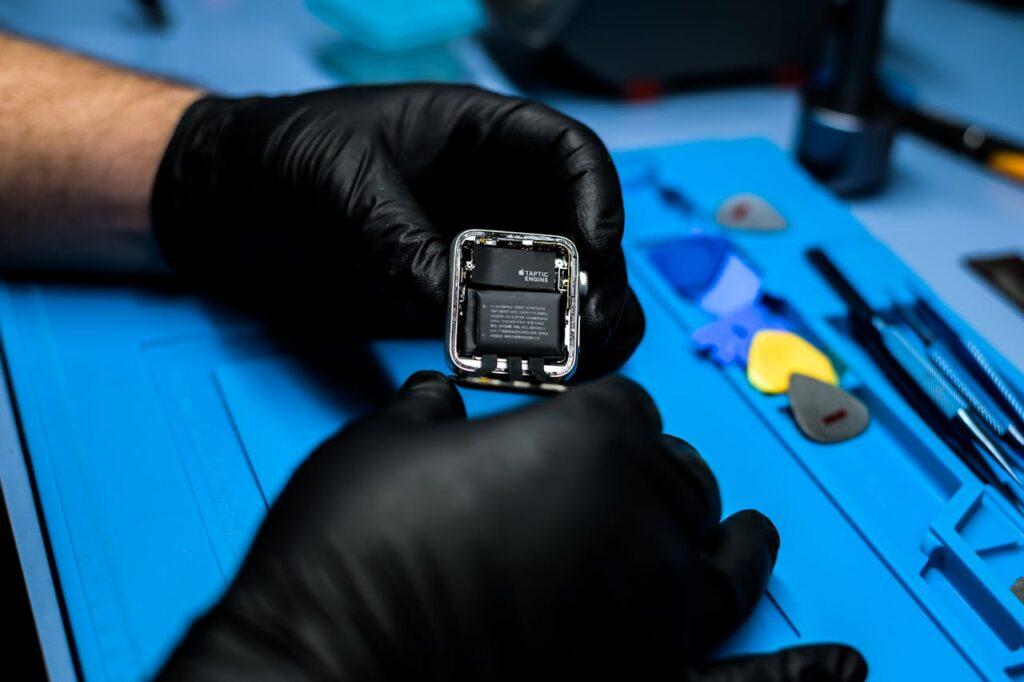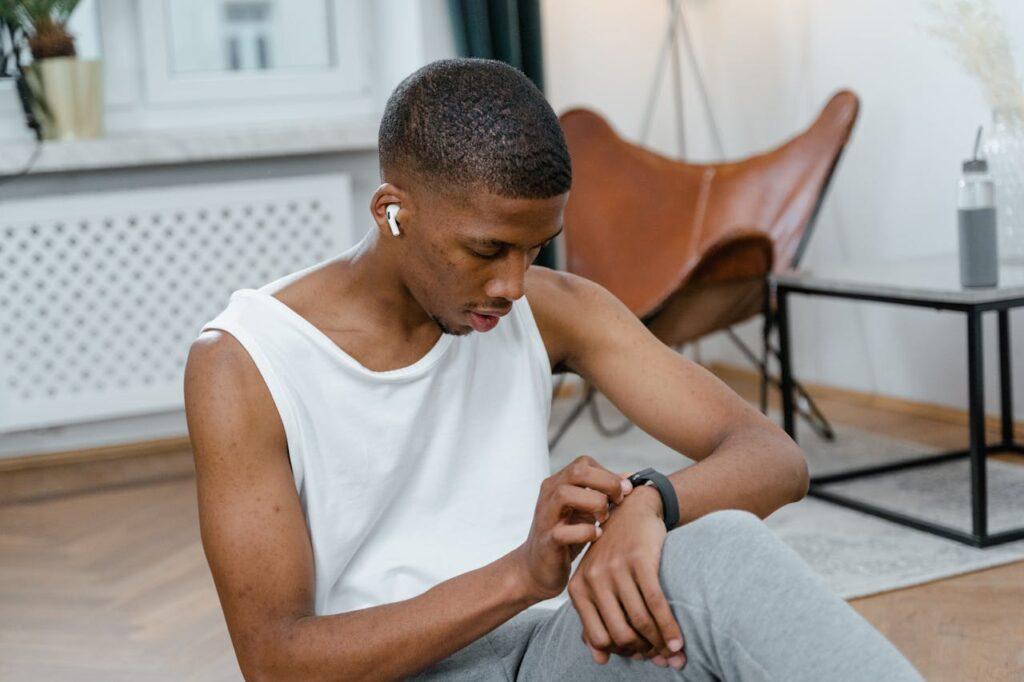Smartwatch Buyer’s Guide: Key Features to Look For
In recent years, smartwatches have evolved from being a niche gadget to becoming a widely adopted wearable technology. With their ability to keep us connected, track our fitness activities, and streamline our daily routines, smartwatches have become an integral part of many people’s lives. However, with the abundance of options available in the market, choosing the right smartwatch can be overwhelming. In this buyer’s guide, we’ll explore the key features to consider when selecting your next smartwatch.
Contents
1. Operating System and Compatibility
One of the most crucial factors to consider when buying a smartwatch is the operating system (OS) it runs on and its compatibility with your existing devices. The two dominant smartwatch operating systems are Apple’s watchOS for Apple Watches and Google’s Wear OS for Android-based smartwatches.
If you’re an iPhone user, the Apple Watch is the natural choice as it seamlessly integrates with the iOS ecosystem, providing a smooth and cohesive experience. The watchOS offers tight integration with Apple’s services, such as iMessage, Apple Pay, and the Health app, making it a compelling option for those deeply invested in the Apple ecosystem.

On the other hand, if you’re an Android user, Wear OS smartwatches from brands like Samsung, Fossil, and Mobvoi offer a wide range of options. Wear OS is designed to work seamlessly with Android smartphones, allowing you to receive notifications, use Google Assistant, and access a variety of apps from the Google Play Store. However, it’s important to note that some features may be limited or unavailable when paired with an iPhone.
Additionally, some smartwatch manufacturers, such as Samsung and Fitbit, have developed their own proprietary operating systems. Samsung’s Tizen OS powers their Galaxy Watch lineup, while Fitbit has its own Fitbit OS. These proprietary systems may offer unique features and integrations specific to the brand but may have a more limited app ecosystem compared to watchOS and Wear OS.
Ensure that the smartwatch you choose is compatible with your smartphone’s operating system and can seamlessly sync data, receive notifications, and utilize various features without any hiccups. Cross-platform compatibility is improving, but for the best experience, it’s generally recommended to stick with the same ecosystem (Apple or Android) for your smartphone and smartwatch.
2. Display and Design
The display and design of a smartwatch play a crucial role in its usability and aesthetics. Most smartwatches feature AMOLED (Active-Matrix Organic Light-Emitting Diode) or OLED (Organic Light-Emitting Diode) displays, which offer several advantages over traditional LCDs.
AMOLED and OLED displays provide superior image quality with deep blacks, vibrant colors, and high contrast ratios. These display technologies allow for better outdoor visibility, even in direct sunlight, as they can achieve higher brightness levels compared to LCDs. Additionally, they are more power-efficient, contributing to longer battery life.
When evaluating a smartwatch display, pay attention to the display size, resolution, and pixel density. A larger display generally provides a better viewing experience, especially for reading notifications, messages, and accessing apps. However, it’s important to strike a balance between screen size and overall watch dimensions to maintain a comfortable and practical form factor.
Resolution and pixel density determine the sharpness and crispness of the display. Higher resolutions and pixel densities result in sharper text and crisper images, making it easier to read and interact with the smartwatch’s interface.
In terms of design, smartwatches come in various styles, from sporty and rugged to classic and elegant. Consider your personal preferences and lifestyle when choosing the design that best suits you. Some smartwatches are designed for specific activities, such as running or swimming, with features like reinforced cases, shock resistance, and enhanced water protection.
Additionally, look for watches with interchangeable bands, allowing you to customize the look to match different outfits and occasions. Popular band materials include silicone, leather, metal, and woven nylon, each offering its own unique style and level of comfort.
3. Fitness and Health Tracking
One of the primary reasons people purchase smartwatches is for their fitness and health-tracking capabilities. These wearable devices have become powerful tools for monitoring and improving our overall well-being.
At the core of fitness tracking are sensors that measure various metrics, such as heart rate, steps taken, distance covered, and calories burned. Many smartwatches also feature built-in GPS, which allows for accurate tracking of outdoor activities like running, cycling, and hiking, providing detailed information about your routes and pace.
Advanced smartwatches may include specialized sensors for tracking specific activities. For example, some watches have dedicated modes for tracking swimming workouts, including lap counting, stroke recognition, and water resistance ratings suitable for pool or open water use.
Beyond fitness tracking, many smartwatches now offer comprehensive health monitoring features. These may include sensors for tracking blood oxygen levels (SpO2), stress levels, sleep patterns, and even electrocardiogram (ECG) readings for monitoring heart health.
When evaluating a smartwatch’s fitness and health-tracking capabilities, consider your specific needs and interests. If you’re an avid runner or cyclist, look for watches with advanced GPS and activity-specific tracking modes. If sleep monitoring and stress management are priorities, opt for a watch with dedicated sensors and apps tailored for those purposes.
Additionally, pay attention to the watch’s compatibility with popular fitness apps and ecosystems. Many smartwatches can sync data with apps like Strava, MapMyRun, Apple Fitness+, or Google Fit, allowing you to consolidate your fitness data and integrate it with existing routines and communities.
4. Battery Life
Battery life is one of the most critical considerations when choosing a smartwatch. After all, a smartwatch with a dead battery defeats the purpose of having a capable wearable device on your wrist.
Most modern smartwatches offer between one and five days of battery life on a single charge, depending on usage patterns and features enabled. For example, watches with always-on displays, frequent GPS tracking, or cellular connectivity will drain the battery faster than those with more conservative settings.
When evaluating battery life, look for watches that offer power-saving modes, which can significantly extend the battery life by disabling or limiting certain features when not in use. Some smartwatches also offer customizable battery optimization settings, allowing you to fine-tune which features and apps consume the most power.
Another important factor to consider is the type of battery and charging method. Many smartwatches have non-removable, rechargeable lithium-ion batteries, which may require professional service or replacement after a few years of use. However, some models offer user-replaceable batteries, providing the option for extended longevity.

Charging methods can also vary, with some watches supporting wireless charging (either through a charging dock or compatible wireless charging pads), while others rely on proprietary charging cables or cradles. Wireless charging can be more convenient, but they are often slower and may not be compatible with all devices.
Finally, pay attention to the watch’s fast charging capabilities. Some models can regain a substantial amount of battery life with just a short charging session, allowing you to quickly top up your watch before heading out for the day or a workout.
Related Blog Post: How to Maximize Your Smartwatch Battery Life
5. Water Resistance and Durability
If you plan to use your smartwatch for outdoor activities, sports, or even during daily tasks like washing dishes or taking a shower, water resistance and durability are essential features to consider.
Water Resistance:
Water resistance is typically measured in ATM (Atmosphere) or meters, indicating the depth and pressure a watch can withstand before water seepage occurs. A water resistance rating of 5 ATM (50 meters) is the minimum recommended for smartwatches, allowing you to wear them while swimming, showering, or during activities with exposure to water splashes or rain.
For more intense water-based activities like snorkeling or surface water sports, look for watches with higher water resistance ratings, typically between 10 ATM (100 meters) and 20 ATM (200 meters). Some specialized sports watches may even offer water resistance up to 60 ATM (600 meters) for scuba diving.
Durability:
In addition to water resistance, smartwatches designed for active use should prioritize durability features to withstand the rigors of outdoor activities, sports, and daily wear and tear.
Look for watches with reinforced cases made from materials like stainless steel, titanium, or high-quality plastics that can withstand impacts and scratches. Sapphire crystal or reinforced glass displays offer superior scratch resistance compared to regular glass.
Some smartwatches also feature specialized coatings or materials that enhance durability, such as DLC (Diamond-Like Carbon) coatings, which provide superior scratch resistance, or military-grade ratings for shock, vibration, and temperature resistance.
6. Smart Features and App Ecosystem
Smartwatches offer a wide range of smart features beyond fitness tracking, such as receiving notifications, making payments, controlling smart home devices, and accessing voice assistants like Siri, Google Assistant, or Alexa.

The availability and quality of apps for a particular smartwatch platform can significantly enhance its functionality. Research the app ecosystem of your preferred smartwatch operating system to ensure it offers the apps and integrations you need.
7. Cellular Connectivity
While most smartwatches rely on a Bluetooth connection to your smartphone for data and functionality, some models offer cellular connectivity. This feature allows you to make and receive calls, send messages, and access internet-based services directly from your smartwatch, even when your smartphone is not nearby. Cellular connectivity is particularly useful for outdoor activities or situations where you want to leave your phone behind while still staying connected.
8. Sensors and Additional Features
Modern smartwatches often come equipped with a variety of sensors and additional features that enhance their functionality. Some examples include:
– Ambient light sensors for automatic brightness adjustment
– Barometers for tracking elevation and altitude changes
– Electrocardiogram (ECG) sensors for monitoring heart health
– Fall detection and emergency SOS features for safety
– Built-in microphones and speakers for voice commands and calls
Consider the specific features that align with your needs and lifestyle when evaluating different smartwatch options.
9. Price and Brand Reputation
Smartwatches can range in price from budget-friendly options around $100 to premium models costing upwards of $1,000. Establish a realistic budget based on your requirements and the features you prioritize.
Additionally, consider the brand reputation and customer support offered by the manufacturer. Reputable brands like Apple, Samsung, Garmin, and Fitbit are known for their reliable smartwatches, frequent software updates, and strong customer service.
Wrapping Up
With the ever-evolving technology in the wearable market, finding the perfect smartwatch can be a daunting task. However, by considering the key features outlined in this buyer’s guide, you can make an informed decision that aligns with your specific needs and preferences. Remember, a smartwatch is an investment in your health, productivity, and convenience, so take the time to evaluate your options carefully. Once you’ve found the right fit, you’ll wonder how you ever lived without the seamless integration and real-time insights that a smartwatch offers.
FAQs:
While most smartwatches require a smartphone for initial setup and full functionality, some models offer cellular connectivity, allowing you to use them independently.
Yes, many smartwatches come with built-in speakers and microphones, enabling you to make and receive calls directly from your wrist.
Battery life varies across models, but most smartwatches offer 1-5 days of usage on a single charge, depending on the features enabled and usage patterns.
Many smartwatches are water-resistant up to certain depths, typically ranging from 50 meters to 200 meters, allowing you to wear them while swimming or participating in water-based activities.
Yes, most smartwatches allow you to choose from a variety of pre-loaded watch faces or even create custom watch faces to suit your personal style.